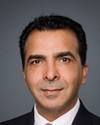Thank you very much, Mr. Chair and committee members, and good morning. Thank you for inviting me back to discuss how the Correctional Service of Canada manages the issue of drugs within our federal penitentiaries.
As mentioned, I'm joined again today by Christer McLauchlan via video conference from Stony Mountain Institution.
As I mentioned at my previous appearance, CSC takes a three-pronged approach to managing offenders with a substance abuse addiction: prevention, treatment, and interdiction.
Today, I'm pleased to update you on some successes we've achieved since my last appearance. I'd also like to discuss in greater detail how we control the supply of and demand for illegal substances inside the walls of our penitentiaries.
Mr. Chair, since my last appearance, employees of the Correctional Service of Canada have continued to do exceptional work in detecting and intercepting illegal substances that others try to introduce into our institutions.
In the six weeks since I last appeared in front of this committee, CSC employees across the country have intercepted drugs and other contraband with an institutional value of almost $200,000. This figure comprises nine major seizures of tobacco, marijuana, and other drugs, all because of the great work of my staff and the tools we employ to detect and intercept drugs.
The largest of these seizures occurred at Cowansville Institution in Quebec, where staff recovered a package along the institution's perimeter. This package contained ecstasy pills, marijuana, tobacco, and rolling papers, with a total estimated value of over $85,000.
In all of these cases, CSC staff work very closely with the police force of jurisdiction to lay criminal charges against those who attempt to introduce contraband into our correctional institutions. We have zero tolerance for those who seek to disrupt the safety and stability of our penitentiaries.
CSC has a wide range of tools at our disposal to detect and interdict any attempts to introduce drugs into our institutions.
Mr. Chair, you may recall that at my last appearance I noted that we would be hiring more security intelligence officers, similar to Mr. McLauchlan, over the coming year, and we expect to have 250 staff in place by the end of 2012-13. We're also increasing our complement of drug detector dog teams. In fact, just three days ago we welcomed Minister Toews to a very successful demonstration of our detector dogs in action at Stony Mountain Institution in Winnipeg, Manitoba.
Beyond these measures, CSC is actively seeking out and piloting new technologies that can help us control the flow of drugs. We recently installed radar/infrared external threat detection systems in two of our institutions. These systems allow us to track and image individuals approaching our perimeter day or night, in all weather conditions. Similarly, we have provided all of our maximum and medium security institutions with night vision and thermal imaging goggles for enhanced perimeter surveillance.
To combat attempts to smuggle drugs in body cavities, we have installed body orifice scanning system chairs, commonly referred to as BOSS chairs, at a number of our sites. And we conducted a trial of a millimetre wave body scanner at one of our institutions in the Ontario region, which is the same type of device you now see in the security screening areas of airports.
We have also upgraded our existing equipment, such as the baggage X-ray systems, our walk-through metal detector systems, and our ion scanner drug detection machines to improve their reliability and life cycle. Furthermore, we are continuing to upgrade visit and correspondence areas with newer devices that assist in detecting drug transfers. We are also upgrading wooden tables to glass-top tables, which make it easier for my staff to detect drug hand-offs between visitors and inmates.
Finally, although not specific to drugs, I'd like to highlight our ongoing efforts to detect and locate contraband cellphones, which can be used to plan and carry out drug throw-overs. We are also investigating how we may employ cell-jamming technologies in our institutions in the future.
These are just a few examples of the tools we have to keep drugs out of the hands of our offenders, and they only scratch the surface of what is a complex, integrated approach to drug interdiction within federal institutions.
Beyond reducing the supply of drugs inside our institutions, we must similarly attack the demand for illegal substances and intoxicants. To this end, we offer integrated programming for offenders to help them leave their addictive, criminal behaviour in the past and to return to society as productive, law-abiding citizens.
Correctional programs enhance public safety results by making offenders accountable for their behaviour, changing pro-criminal attitudes and beliefs, and teaching skills that can be used to monitor and manage problematic behaviour.
Mr. Chair, I'm proud that CSC is recognized as an international leader in the development and delivery of correctional programs designed to rehabilitate offenders and improve public safety. That being said, I realize there's concern about offenders being wait-listed for programs and that the perception is that we are not addressing their criminogenic behaviours in a timely manner. I'd like to offer some clarification. When we refer to a wait list in the correctional system, we are not referring to wait lists in the same context as being wait-listed for surgery. In our case, a wait list refers more to the schedule of when an offender will receive programming. This is determined by a number of factors.
For example, those who have an upcoming release date will be prioritized over someone who may not be eligible for parole for a number of years. It is true that in the past few years, CSC has found it challenging to deliver programs to all offenders, given the trend towards shorter sentences. However, I'm pleased to inform you that as a result of our transformation agenda and strategic reinvestment, we have invested over $30 million more towards programming in the past three years. The vast majority of these funds were dedicated to hiring more staff to deliver programs to our offender population.
Because of these investments, our capacity to deliver programs has increased dramatically, as have our program enrolment figures. In the last year alone, correctional program enrolments increased by over 24%. Not only did enrolments increase, but thanks to the hard work of my staff, more offenders completed the programs they participated in and started those programs earlier in their sentences. In addition, we focused resources on being able to provide certain programs to offenders as soon as they arrived at intake. This includes substance abuse programs, one of our most prevalent need areas.
I'd also like to point out that CSC has recently introduced a new program delivery model called the integrated correctional program model or ICPM for short. The new model enables offenders to take programs earlier in their sentences, addresses core substance abuse issues, and also holds offenders accountable for such things as violent behaviour. We expect that ICPM will produce positive results that will help address offenders' criminogenic factors and thereby help them successfully reintegrate into the community.
In conclusion, Mr. Chair, every day CSC employees across the country are working to ensure safe, drug-free institutions that will promote offender rehabilitation and create safer communities for Canadians. I'm proud of the work they do every day, and I'm proud of our efforts as an organization to address this very serious public safety issue.
Mr. Chair, I would welcome any questions you may have for me at this time.



